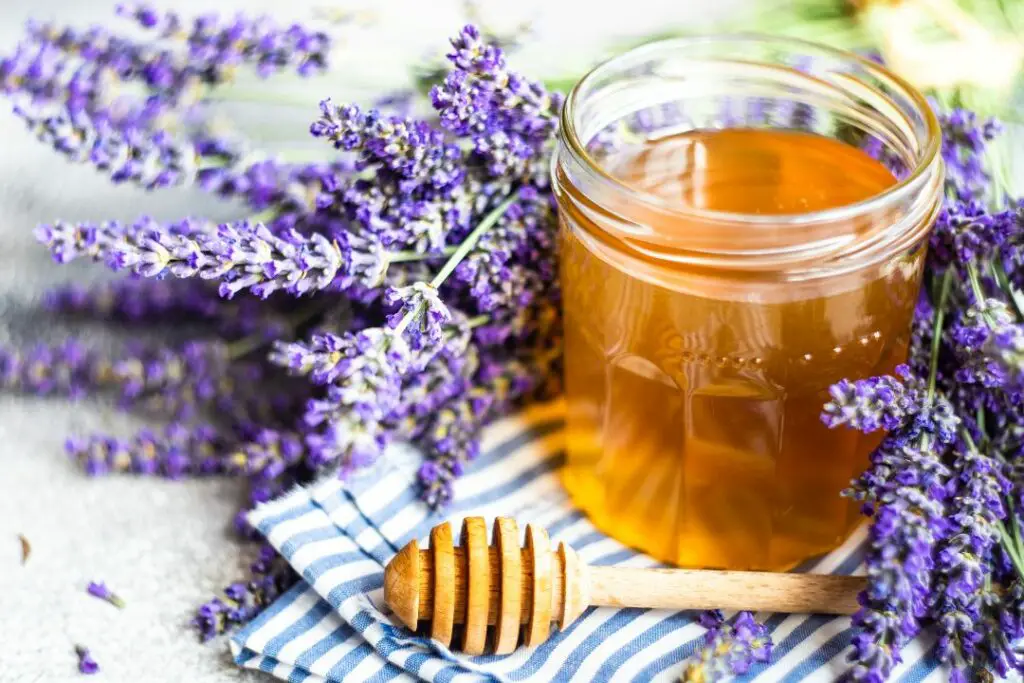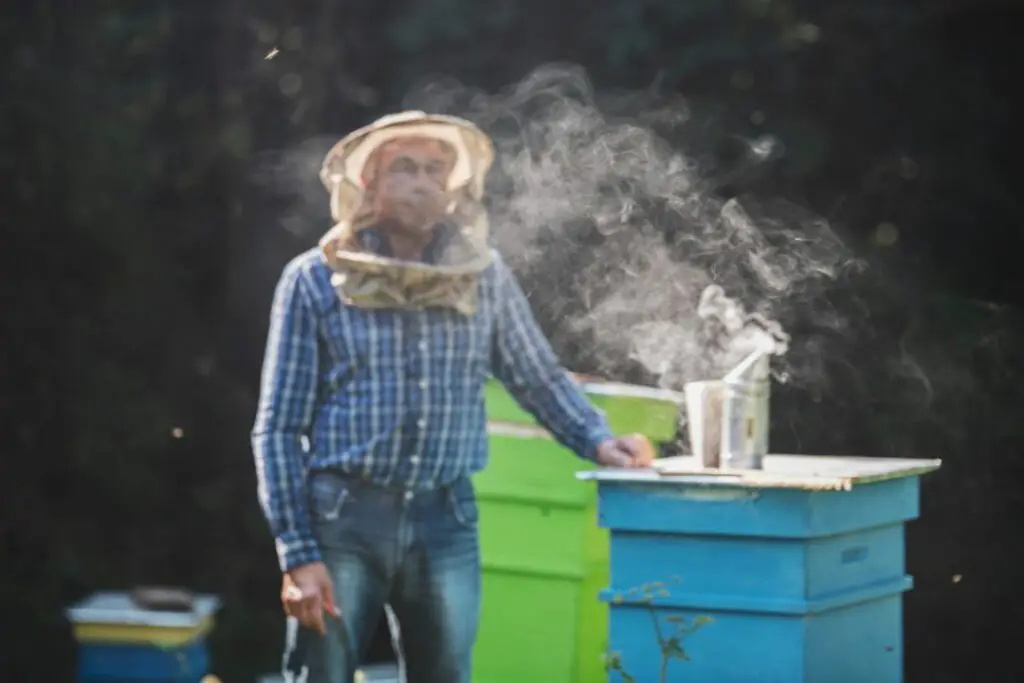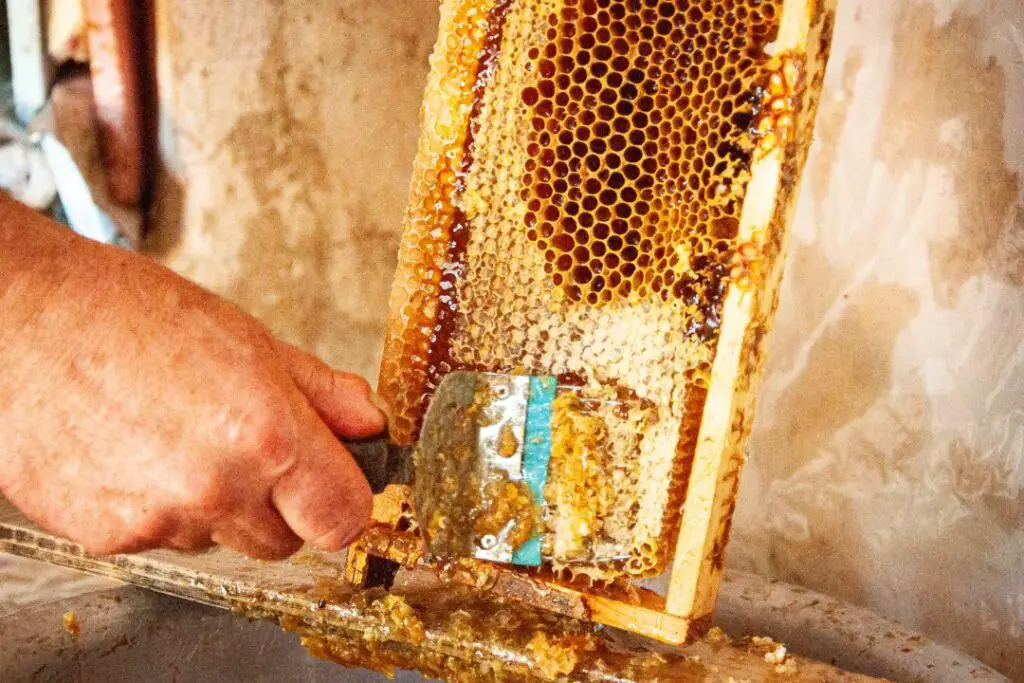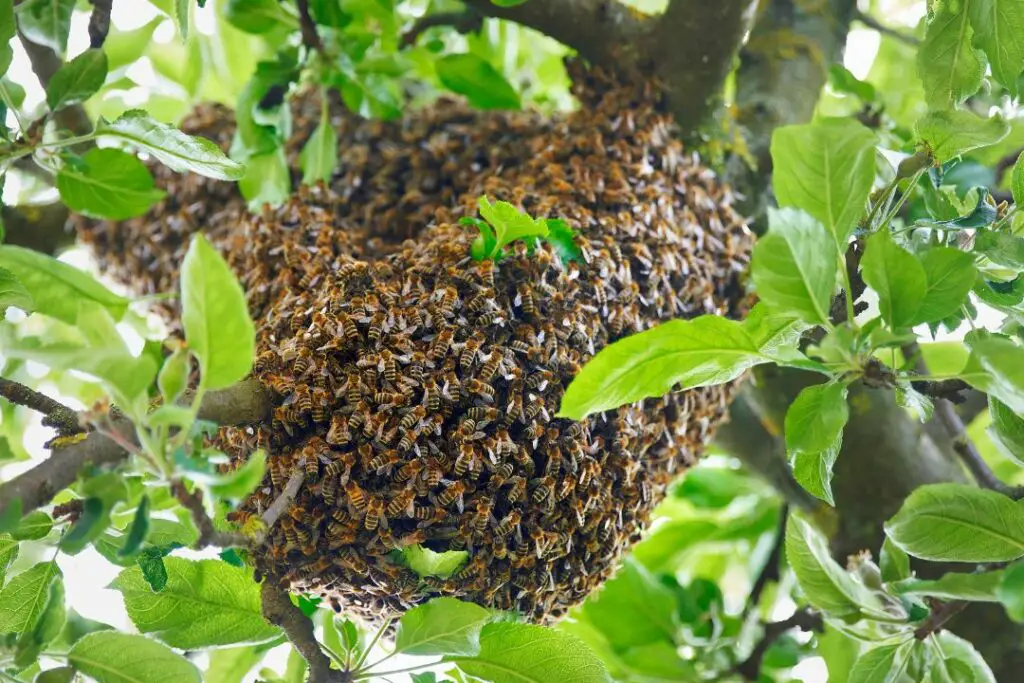Last updated on January 11th, 2024 at 01:09 pm
Is your honey or honeycomb giving off a questionable aroma, or maybe you’ve got some local honey and you’re shocked by the smell?
Either way, we’ve covered you with five simple reasons your honey smells terrible (and why you might not need to bin it).
Let’s jump straight in with the most common reasons for a questionable smell of honey and work our way down the list.
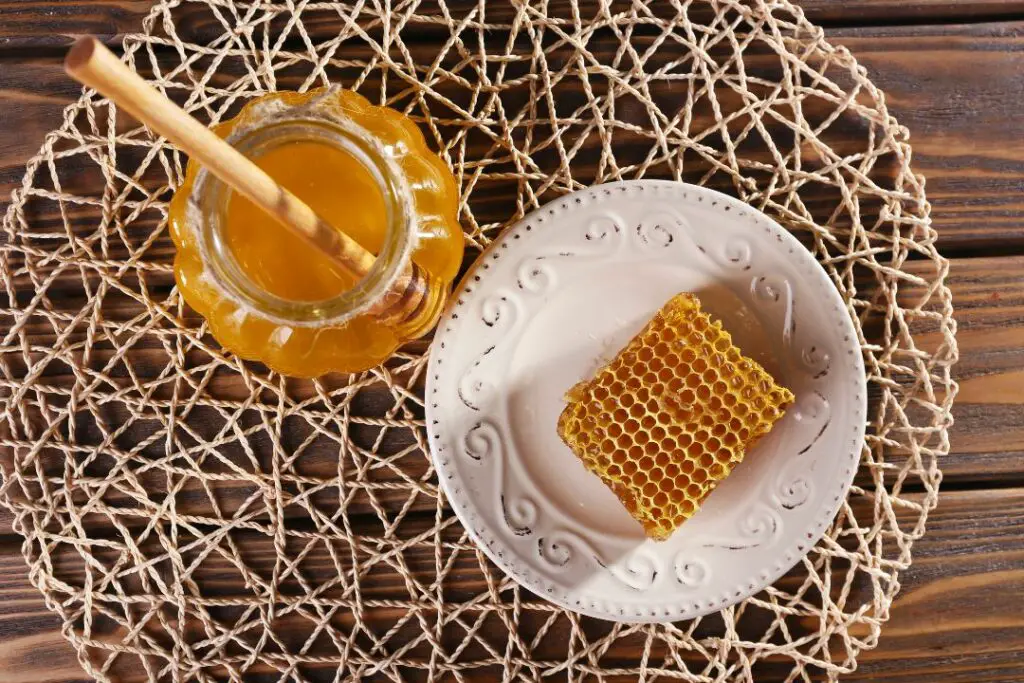
why does honey smell bad?
Fermentation! It’s a natural process driven by microorganisms, like yeast and bacteria, converting organic compounds – especially sugars and starches – into alcohol and acids.
While this process is perfect for making wine, beer, and certain foods, when it comes to honey, it’s not a good thing.
*Additional reading – Find out why honey can actually be bad for bees.
What causes honey to ferment?
Honey is hygroscopic, meaning it can absorb moisture from the environment. If honey’s moisture content exceeds 20%, it creates a conducive environment for yeast to thrive and start the process.
Properly cured honey generally has a moisture content of 17% to 18.6%, which stops this from happening.
Honey naturally contains wild yeasts but is inactive due to its low water content, high acidity, and natural antimicrobial properties. But, if conditions change (like increased moisture), they can become active and start the process.
Storing honey in a warm and humid environment will be the primary culprit here. It’s crucial to store honey in a cool, dry place and ensure the container is well-sealed to prevent moisture absorption.
It Makes honey smells like alcohol
The primary agents of honey fermentation are yeasts. They convert the sugars in honey, mainly glucose and fructose, into alcohol (primarily ethanol) and carbon dioxide, giving fermented honey a distinct sour or alcoholic smell.
Some of the other by-products are volatile compounds that can have solid and off-putting odours. Depending on the specific conditions, these can range from vinegary to even foul, rotten smells.
All the activity and the production of acids can alter the honey’s pH, further influencing its taste while making it smell more acidic or sour.
How can you tell if your honey is fermented?
Here are some quick checks so you can easily tell:
- Bubbly or Foamy Appearance: Fermenting honey often has a bubbly or foamy layer on its top.
- Sour or Alcoholic Odor: A strong sour, yeasty, or even slightly alcoholic smell is a clear indicator.
- Altered Taste: Fermented honey will have a tangy or sour taste, different from the typical sweet flavour of honey.
- Changes in Texture: Separation, with a clearer liquid (often containing the fermented compounds) settling above the denser honey.
- Presence of Water: Visible water or if the honey seems excessively runny.
- Gas Release: If you hear a release of gas (a “hiss” or “pop” similar to opening a carbonated drink), it can indicate fermentation.
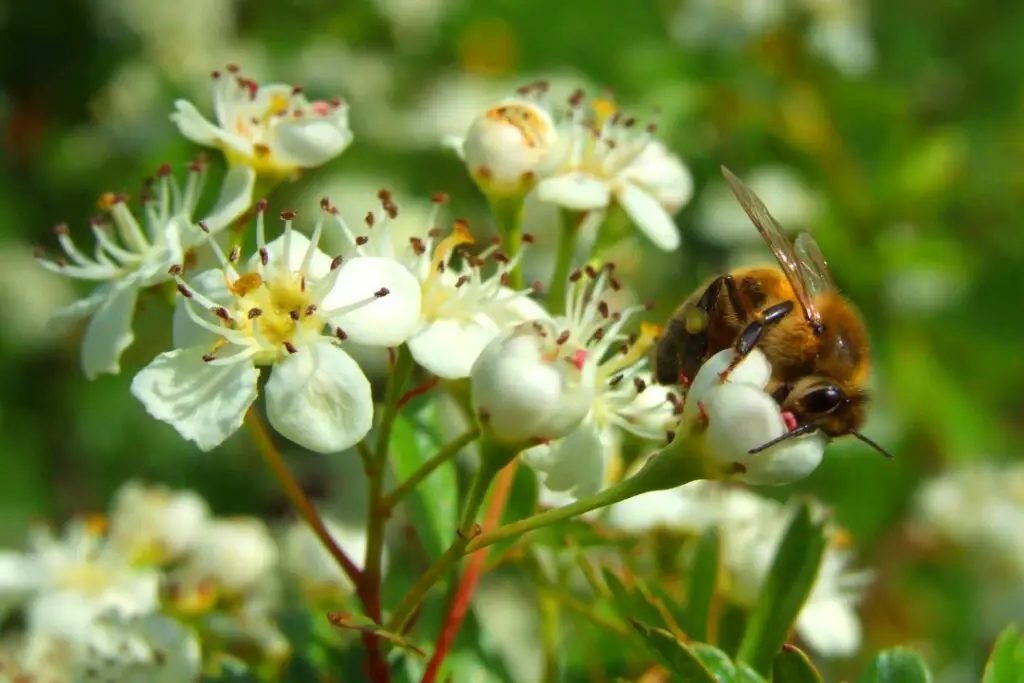
Contaminated Honey
Any impurities, dirt, or foreign substances can lead to spoiled honey. This can happen if the beekeeper doesn’t follow hygienic extraction and storage methods.
They come in all forms, but some of the most common in honey or comb include:
Unsanitary hive and honey extraction equipment – Dirt from hive equipment can make it into your jar of honey. When beekeepers extract honey from hives, they use various tools, and if they aren’t clear and sterile, it can turn your honey bad.
Plastic containers –Cheap plastic honey storage containers can leach into the honey, giving an unpleasant chemical taste. Cheap takeout boxes are usually the worst for this, but you can solve it by always purchasing and storing your honey in glass containers.
Insects – If honey isn’t properly trained before being jarred, it risks tiny particles of dead insects mixed in with honey. If not filtered out, they can decompose and produce a bad odour.
Bacteria and mould – While honey is naturally antimicrobial, contamination with certain bacteria or moulds can occur, especially if water is too high. Like in all spoiled foods, these microbes can produce compounds that give off a foul smell and are unsafe to eat.
Where The Nectar For Your Honey Is Collected
The source of nectar is perhaps the most influential factor in determining your honey’s smell, flavour, and colour. Each flower gives unique characteristics to the honey, which is why we have many types of honey.
Some flowers have very potent odours, which can result in stronger-smelling honey. For instance, honey made from eucalyptus flowers might hint at its strong menthol smell.
But this isn’t always a good thing for everyone. Honey derived from certain plants might have a distinctive smell due to unusual nectar compounds. Buckwheat honey has a robust, molasses-like scent, which some people might find pungent or off-putting.
Even within the same type of flower, regional differences in soil, climate, and overall environment can lead to slight variations in nectar composition and what the honey smells like.
Additional reading – Don’t miss our guide on honeycomb’s surprising health benefits.
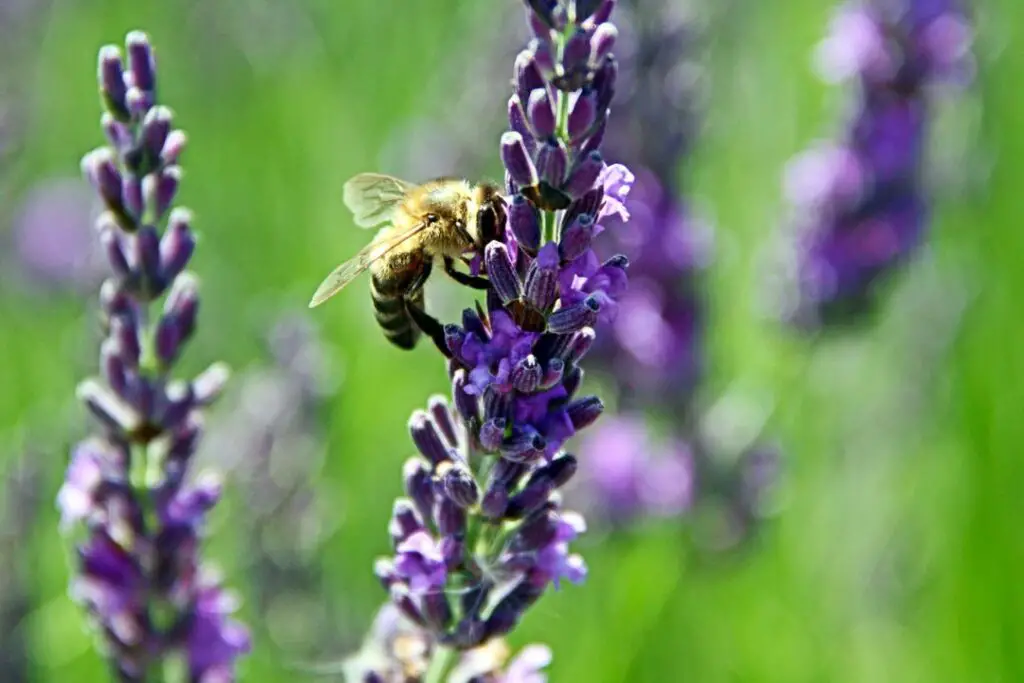
Exposure To Chemicals
Bees exposed to chemicals can carry them back to the hive or nest, affecting the smell and taste of the honey they make.
We can split these down into four main groups:
- Pesticides and Insecticides: Many farmers use chemical sprays to protect their crops from pests. Bees foraging on these treated plants can inadvertently collect chemical residues along with the nectar. When this tainted nectar is processed into honey, it can result in honey with off-flavours and an unpleasant smell.
- Herbicides and Fungicides: While primarily targeted to unwanted plants or fungi, flowering plants can also take up these chemicals. When bees visit these flowers, they can transfer these chemicals back to the hive, leading to contaminated honey.
- Environmental Pollutants: In areas with significant industrial activity or pollution, harmful chemicals can settle on plant surfaces. Bees contacting these pollutants can introduce them to the honey, potentially altering its aroma.
- Antibiotics and Miticides: Beekeepers sometimes use chemical treatments to protect their hives from pests and diseases. Improper usage or residues of these chemicals can contaminate the honey.
Poor Colony Health
A range of bee diseases can impact the hive and its inhabitants. The symptoms vary considerably, but one of the unfortunate side effects is the smell.
American Foulbrood (AFB) is a deadly disease that specifically affects the young larvae of a honey bee colony. It’s sadly incurable, and the only option for treatment is destruction, avoiding the spread of this terrible disease.
Affected hives give off a foul, rancid smell, not unlike rotting animal carcasses. This stench is caused by the decaying brood, which turns dark brown before turning into a sticky, foul-smelling liquid.
When they turn nectar into honey, it will be stored alongside the diseased brood, causing it to go bad.
Any honey produced by these bees would likely carry that same disgusting smell, but no beekeeper in their right mind would ever harvest, sell or consume it.
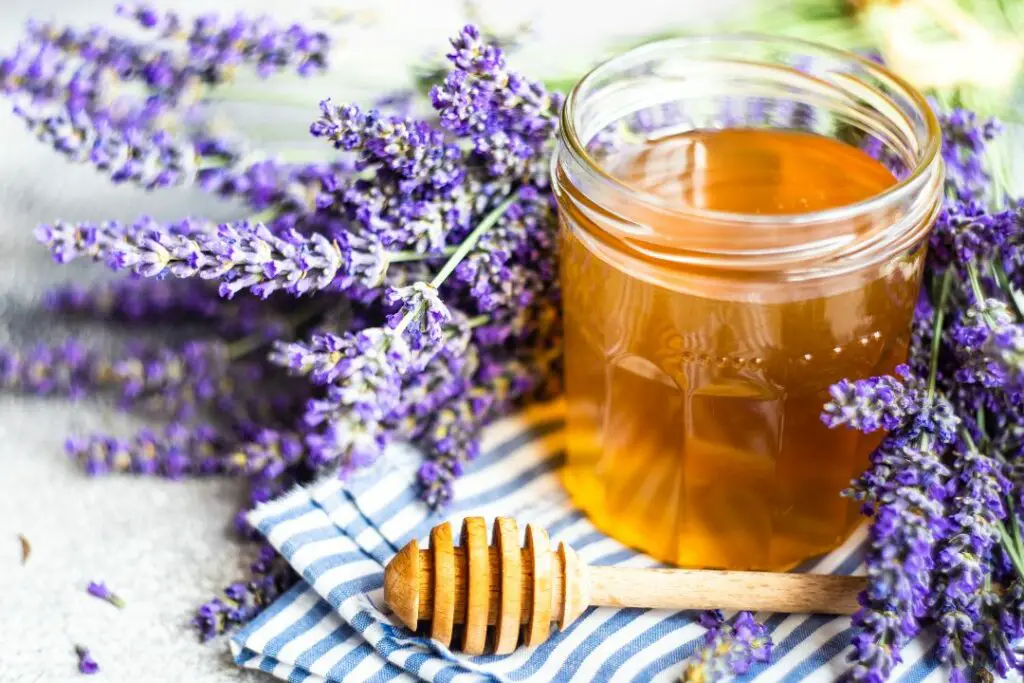
Frequently Asked Questions
Now, let’s look at the internet’s most pressing questions about bad-smelling honey.
What is aster honey, and why does it smell foul?
Aster honey is derived from the nectar of aster flowers. It’s known for its distinctive and often unpleasant smell, reminiscent of dirty socks. Despite the odour, it’s safe to eat and tastes great. The smell will also fade as the honey matures in its glass jar.
Is raw honey more likely to have a bad smell?
Raw honey retains all its natural components, including pollen, enzymes, and other compounds. This can impart a richer flavour, but it can sometimes lead to off-smells, mainly if it is sourced from certain plants or starts fermenting.
How to tell if honey is bad?
Honey has a long shelf life, but if it smells sour, yeasty, or alcoholic, it might have fermented. A texture change, bubbles, or foamy appearance can also indicate bad honey. But crystallization is a natural process and doesn’t mean your honey has spoiled.

